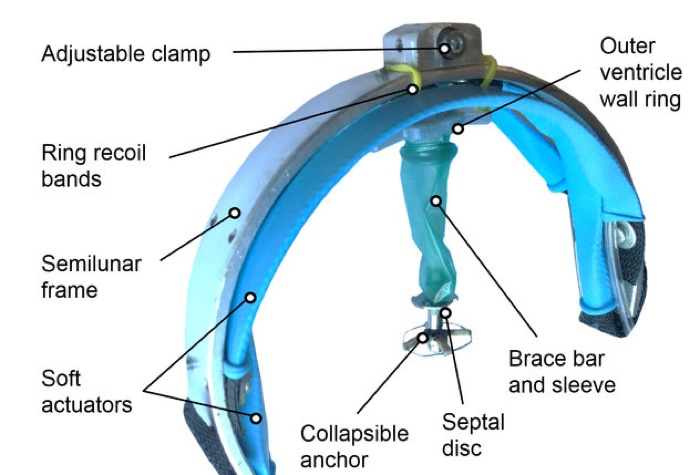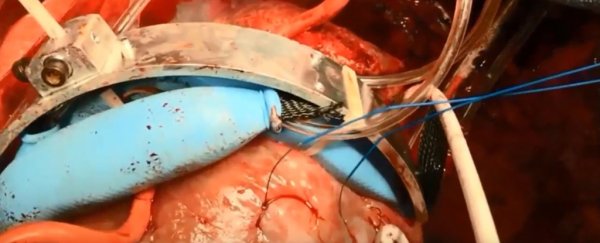Contrary to what you may have heard, there is actually a way to mend a broken heart - but the solution might not be entirely what you're expecting.
Scientists have developed a soft implantable robotic device that wraps around the heart and squeezes it to help damaged or failing organs keep properly pumping blood.
"We've combined rigid bracing with soft robotic actuators to gently but sturdily help a diseased heart chamber pump blood effectively," says cardiac surgeon Nikolay Vasilyev from Boston Children's Hospital.
The device builds upon a previous robotic sleeve that Vasilyev and fellow researchers unveiled earlier in the year, which similarly enveloped the heart and helped it to maintain a steady circulation of blood to the rest of the body.
But the advantage of the new device is that it can selectively assist either the left or right ventricle of the heart – an ability that could help save the lives of patients with congenital heart conditions affecting only one side of the organ.
"We set out to develop new technology that would help one diseased ventricle, when the patient is in isolated left or right heart failure, pull blood into the chamber and then effectively pump it into the circulatory system," Vasilyev explains.
The device involves a collapsible anchor that is inserted into the ventricle along with a bracing bar and sealing sleeve, with the apparatus being held in place by the interventricular septum, which separates the heart's two main chambers.
Meanwhile, a separate frame embedded with soft actuators is mounted around the ventricle. The external actuators rhythmically squeeze the heart from the outside, while the anchor manipulates the septum inside the organ, helping the heart beat more precisely than previous pumping mechanisms.
"As the actuators relax, specially-designed elastic bands help return the heart's wall to its original position, filling the chamber sufficiently with blood," Vasilyev explains.
 (Payne et al., Sci Robot 2017)
(Payne et al., Sci Robot 2017)
One benefit of the system is that blood doesn't come into direct contact with the robotic apparatus.
Existing heart pumps run blood through their pump, which can introduce other kinds of complications, the team says.
"Running blood through a pump always requires a patient to be placed – permanently – on anticoagulant medication to prevent blood clotting," explains Vasilyev.
"It can be very difficult to keep the right balance of medication, especially in paediatric patients, who are therefore at risk of excessive bleeding or dangerous clotting."
So far, the new device has been tested on beating pig hearts, where it enabled steady blood flow to be maintained in a number of simulations designed to mimic different kinds of human heart failure.
Those experiments didn't involve permanently implanting the device in a live animal, however. According to the team, that's the next step, to see if the robotic heart hugger can successfully maintain a healthy blood flow in an animal over a number of months.
If the team is successful there, they'll be looking at testing the system on human patients in a clinical trial, and if all goes well, we might one day see this kind of device helping patients experiencing heart failure, which affects some 5.7 million people in the US – with half of them dying within five years of the diagnosis.
"We are planning to conduct long-term validation of this technology in chronic animal studies and then move to first-in-human clinical studies," Vasilyev explained to Seeker.
"Bringing medical devices like this one to market takes a long time due to [a] lengthy regulatory pathway and may take up to two to three years."
It sounds like a long time, but if everything goes as planned, for millions it will be worth the wait.
The findings are reported in Science Robotics.
